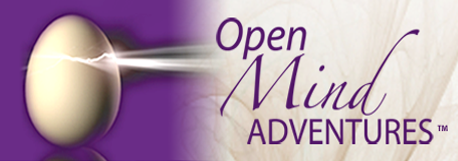Innovation and Collaboration
“The most exciting breakthrough of the 21st Century will occur not because of technology but because of an expanding concept of what it means to be human.”
Jon Naisbitt, Megatrends 2000
We have found that innovation requires these key elements:
• Time alone to empty your mind of every day thoughts in order to be more receptive to creative ideas.
People who are more relaxed are more open to creative breakthroughs than those who are stressed. In addition, organizations that offer a healthy balance spent between meetings and individual time tend to be more innovative.
• A tolerance for learning.
If your thinking is too rigid regarding what is possible or how to proceed, you’ll reject or minimize good ideas. Thus, people need to become aware of what mental patterns limit and expand their learning.
• An abundance of ideas.
As the philosopher Chartier once said, If everyone is thinking alike, no one is doing much thinking.” Instead, create freethinking spaces where ideas lavishly pour. You’ll figure out later which ones to focus on.
• Clear, consistent goals
If the goals keep shifting, the flow of innovation will start and stop and you won’t achieve the results you want. Instead, ensure that all groups, teams or departments are aligned so that you don’t have competing goals or projects.
• Collaboration
Creating a collaborative team or culture requires a sense of shared ownership for change that starts with the leader and spreads throughout the organization as trust and accountability develops. It requires open communication, the ability to successfully negotiate differences, and to engage people at their core. It grows from a commitment to serve the greater good rather than one’s department or personal agenda. Once committed, as team members expand their tolerance for learning, they let go of the need to be right. This open mindedness positions people to discover the creative possibilities that emerge when they consider many points of view. Collaborative cultures are grounded in the steadfast intention and skillful action that nurtures growth in one’s self and others. These advanced cultures are the fertile soil from which high performing teams, breakthroughs and innovative workplaces grow.
We help you develop collaborative teams and cultures that are uniquely tailored to your specific circumstances.
• An Ability to Tap into Creativity at Will
Innovative ideas often emerge when we are most relaxed and when we least expect it. Quantum physicists tell us that at these times we are tapping into the universal energy field which has unlimited creative potential. Carl Jung named this field, the collective unconscious. But what if we don’t have to wait for these experiences to sneak up on us? Instead, what if we could tap into our creative abilities at any time in any activity?
To guide you in deepening your intuitive and creative abilities, Aimee Bernstein offers an inner map. This map identifies landmarks and key skill sets to move you beyond intellectual thoughts and become one with this unified field. You will learn to quiet your cognitive mind, reduce stress, recognize how energy ”speaks” to you, and to use your physical body as a feedback system to align and open to the universal energy system.
I have used this process with hundreds of clients including senior and mid-managers, engineers, psychologist, professionals and artists, with extraordinary results. This inner process is the topic of my book Stress Less Achieve More: Simple Ways to Turn Pressure into a Positive Force in Your Life (AMACOM 2015).
Email us at Aimee@openmindadventures.com to learn more about our collaboration/innovation services
